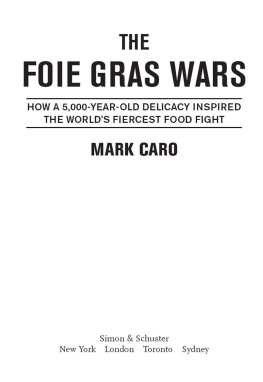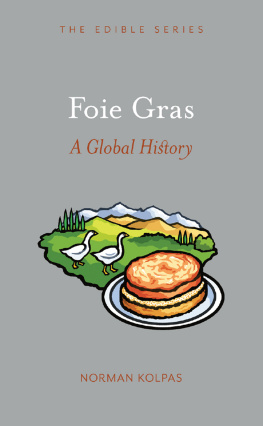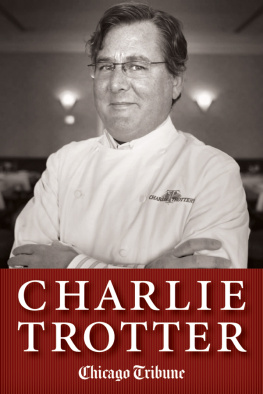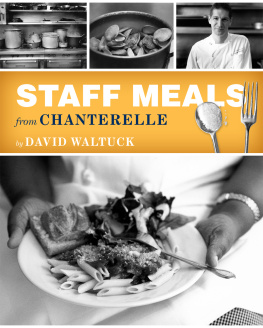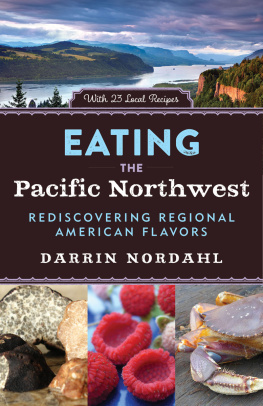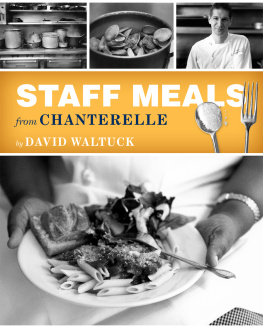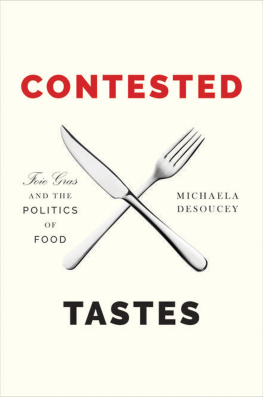I n Philadelphia, Hugs for Puppies bit the dustthe name, that is.
Nick Cooney finally decided that his groups cute novelty tag had run its course, so in April 2008 he redubbed the organization the Humane League of Philadelphia. Its something Ive been wanting do to for quite some time, Cooney said. We are a professional organization and wanted to have a name that reflected that. The Humane League Web site depicts an open-beaked yellow chick looking at the viewer beneath the words Every animal has a voice.
The summer of 2008 turned out to be far more peaceful than the previous year for Cooney and Philadelphias restaurants. Cooney still led some anti-foie demonstrations, branching out to the suburbs, and he was able to add a few more names to his not-serving-it list, which now exceeded 50. He also discovered at least one back-sliding restaurant and resumed demonstrations until it once again quit serving the dish. In the fall of 2008, he was considering going after Olivier Desaintmartins Caribou Caf for including foie gras in his duck liver pt, which, you may recall, the chef had admitted hed been doing all along.
But foie gras no longer was Cooneys number one concern. He was directing greater energies toward the problem that hed always considered tops on the animal-cruelty chart: battery cages for egg-laying hens. His aim was to convince five local colleges and institutionsthe largest among them the University of Pennsylvaniato switch to cage-free egg purchases. His tactics were significantly different from how he engaged in the foie gras battle. Stand in front of a restaurant and make a lot of noise, and you can seriously affect business, but, he said, its certainly not the same for a dining services at a university. Instead, the Humane League had sought low-key meetings with campus officials, faculty members and student groups to rally support.
Still, Cooney said he hadnt abandoned the foie gras fight. His group would mobilize if Councilman Jack Kelly ever pushed forward his proposed ban (which had yet to happen as of late 2008). And if the city council never took action, Cooney said, hed consider pushing a voter referendumbecause by this point Cooney had become convinced that the only chance for resolution involved legislation. That certainly would be nice, to have some closure.
As for the efficacy of continued demonstrations, he said, most of the restaurants that served foie gras have made a decision one way or another, and at this point I dont think theyre going to change. So the Humane League didnt bother returning to Le Bec-Fin or the London Grill, although the groups ACLU lawyers continued challenging the restrictiveness of the London Grills injunction, due to expire in late 2008.
What Cooney didnt know was that the London Grill had removed foie gras from its menu over the summer anyway. We just couldnt afford it, sighed Terry McNally. Its hard to push foie gras in these times. With the economy so weak, many restaurants were struggling, so the London Grill lowered prices across the board. Terry and ex-husband/chef Michael McNally were able to make the hanger steak more affordable by taking away the accompanying foie grasgreen peppercorn butter. Still, she said, the London Grill hadnt banned foie gras. Im looking forward to bringing it back in the winter.
At Hudson Valley Foie Gras, the experiment worked. For its first 28 years, the farm kept the ducks in gavage for 28 days, but in the second half of 2008, it was transitioning the birds into 21-day force-feeding periods. Izzy Yanay said the feedings remained three times daily, the food itself was unchanged, and the ducks ultimately ate a little less than over the 28-day feedings. The biggest difference? The pacing, he said. Thats basically it.
The other big difference would be to the companys bottom line. The resultant livers were slightly smaller, Izzy said, but that was no big deal because if you dont pay for another week, you save much more money than what youd get from that shading of the liver that you lose. Whats more, the farm had been trying out the abbreviated feeding schedules over the summer, when the heat typically triggers more duck deaths, but Izzy said the mortality rate actually dropped to 1.8 percent (from its usual 3 percent or so). Losing fewer birds was good for business, and it certainly couldnt hurt Hudson Valleys efforts to be recognized as a humane product.
The farm was still trying to clear up those sores on the ducks feet, and Izzy remained hopeful that down the line Hudson Valley Foie Gras could be officially deemed humane. In the meantime, the companys cage free campaign was getting out the message that the farms ducks didnt live in the cramped conditions frequently shown in animal-rights literature and videos. These efforts were having some impact; even someone from Wolfgang Pucks Spago had given the product a second look, though Puck ultimately stuck with his no-foie policy. In Chicago, Michael Tsontons Copperblue changed the name of its foie appetizer once again to Hudson Valley Farm Cage Free Foie Gras Terrine.
Tsonton, by the way, said he had been fielding even more orders for foie gras now than before the Chicago ban because more people know about it. Had he received any protests for serving the dish since the ban was reversed? Not at all, he said. Zero. Tim Doyle at European Imports said his foie gras sales in Chicago nonetheless were down about 30 percent compared to the pre-ban days, though he blamed the economy and restaurants overall struggles.
Chicago didnt go down the path of Philadelphia and other cities where activists demonstrated against restaurants to force foie grass removal. After the respective joy, relief and fury (depending on ones position) over the city councils repeal of its ban, the issue all but disappeared in Chicago. People seemed sick of even talking about it.
But just as the nations third largest city was closing the book on its foie gras war, the nations biggest one was writing another chapter. Fresh from his announcement that he was running for mayor of New York City, Councilman Tony Avella proposed on June 11, 2008, a city ordinance supporting a pending state senate bill that would prohibit the force-feeding of birds to enlarge their livers (without actually banning foie grass sale). That same day, the mayoral candidate appeared on WNYCs The Brian Lehrer Show to debate his bills merits with Michael Ginor of Hudson Valley Foie Gras.
Here are some choice snippets:
A VELLA : Youre literally blowing food into the stomach in order to artificially enlarge the liver. I mean, this is extremely painful to the animal and really is animal cruelty. The industry should be ashamed of itself.
G INOR : The councilman has mentioned that the process is painful, and he mentioned theres food that is blown through a huge tube. Unfortunately none of those words are accurate whatsoever in describing the process.
A VELLA : They push the metal pipe down into the animals stomach, and they literally, through compressed air, force huge amounts of food into the ducks stomach.
G INOR : Every single thing that Mr. Avella just said is factually, completely incorrect, false, and I would welcome him to visit the farm one day. I just wish that before people go out and try to make such drastic economic changes and take the livelihood of 200 employees in a New York state company, that they would at least do the minimal, the minimal research before just jumping on a bandwagon.
A VELLA : The truth is, they are doing this inhumane cruelty to the animal. Let them feed the animals normally. Let them feed as though they would on their own. And if they could still do foie gras under that circumstance, fine.

